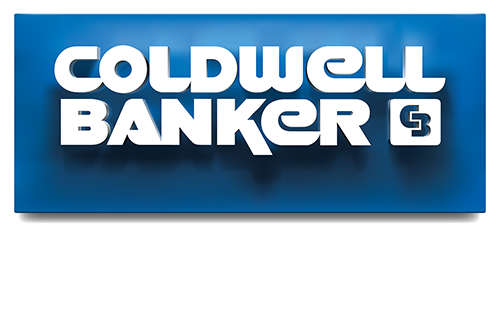Glossary of terms used in Canadian Condominiums and Stratas.
The following terms are condominium-related terms that are used in the provinces subject to common law in Canada. Terms may vary by Province. A list of Canadian Condominium Legislation from Coast to Coast can be located at the National Resource Centre.
Act: The provincial condominium legislation that creates condominiums and outlines how they are to be administered. The name varies by province: Condominium Act, Condominium Property Act, Strata Plan Act.
Annual General Meeting – this is a requirement once in each fiscal period and is a meeting of owners. Board elections, appointment of auditors, acceptance of financial statements and question and answer sessions are normal agenda items.
Board of Directors: The governing body whose responsibility it is to ensure the smooth running of the condominium corporation. The directors are generally elected by, and from amongst, the unit owners.
Building Assessment Report: See Performance Audit.
By-law: One of the governing documents for the corporation which supplements the Declaration or Condominium Plan, covering the day-to-day operational aspects of the Condominium, and outlining the responsibilities of the Board of Directors. By-laws can be created or revoked by a majority vote of the owners, voting percentages are dictated by Provincial Legislation.
Common Elements: Refers to all of the property of the Condominium excluding the units (e.g. recreational facilities, hallways, elevators, roof, etc.).
Common Element Assessment: A monthly payment made by each unit owner to cover the maintenance of common elements and other common expenses including the contribution to the reserve fund.
Common Element Fee: See Common Element Assessment.
Common Element Rules: One of the governing documents of a Condominium Corporation, passed by the Board of Directors and generally relating to the appropriate use to be made of the common elements and units by owners, tenants and others.
Common Expense Proportion: a factor included in the declaration that defines the percentage of the common expenses that are the responsibility of a given unit.
Common Interest Proportion: a factor included in the declaration that defines the percentage ownership of the corporation connected to a given unit. This is used upon termination.
Common Property: See Common Elements.
Condominium: A type of property ownership, not a style of building. In a Condominium the owners own their units/lots or parcel of tied land (POTL), as well as an interest in the common elements. There are Standard, Common Element, Bare Land/Vacant Land Condominiums and Leasehold Condominiums, depending on the province.
Condominium Fee: See Common Element Assessment
Condominium Management Services Act: Legislation in Ontario to licence and oversee Condominium Managers.
Condominium Plan: One of the governing documents of the Condominium Corporation. The condominium plan shows the buildings and land being divided into two or more units; sets out the boundaries of the units; illustrates the common property; and includes a unit factor schedule. In some provinces, the description also includes the architectural and structural drawings.
Condominium Corporation: A legal entity that is created at the time of registration, and whose members or unit-owners are the building owners. The mandate of the Corporation is to manage the property and any other assets of the Corporation, which is done through the election of a Board of Directors.
Contingency Reserve Fund: See Reserve fund.
Contingency Fund: Used in Nova Scotia only. Means a true contingency fund, separate from an operating fund, reserve fund. This is different from the usage in BC, where a contingency fund is a reserve fund.
Conversion: a condominium constructed in a building that has been converted from another use. Some provinces like Ontario have special requirements for conversions with respect to warranty coverage and reserve fund planning.
Declarant: Generally, the developer of the Condominium Corporation who is the owner of the property before registration of the declaration and description (or Condominium Plan) and who, following registration, is also the owner of the individual units prior to their sale.
Declaration: One of the governing documents of the Condominium Corporation, functioning as the equivalent of its constitution. It must be filed with the description to create the Condominium Corporation. Also called Strata Plan in BC, and Condo Plan in some provinces.
Depreciation Report: See Reserve Fund Study
Description: Survey drawings which set out the boundaries of the corporation and the units.
Easement for Exclusive Use and Occupation: see exclusive-use common element.
Estoppel Certificate: A written statement, preapred by the Board, that prospective purchasers of a resale unit should request, which contains pertinent information that may influence the closing of a real estate or financing transaction.
Exclusive Use Common Element: Exclusive use common elements are common elements used exclusively by one (or more) designated owners such as balconies and terraces. In some cases, underground parking spaces are exclusive use common elements, meaning only the person assigned to that space can use it, but it is the responsibility of the Corporation to maintain the whole garage. Referred to as Limited Common Property in BC.
Exclusive-Use Areas: See Exclusive-Use Common Element.
Exclusive Possession: See Exclusive-use Common Element.
Financial Statements – the Board must prepare and file financial statements audited by a third party on an annual basis for corporations with ten or more units. Un-audited statements required for corporations with nine units or less.
General Meeting – this is any other meeting of owners that is not an annual general meeting. There is no requirement to have a general meeting.
Information Certificate: This term is used in British Columbia in lieu of Estoppel Certificate. This is different from a Periodic Information Certificate, New Owner Information Certificate or Information Certificate Update in Ontario.
Information Certificate Update: This certificate is issued to Ontario condominium owners if there are key changes to the information included in a Periodic Information Certificate.
Insurance – there are two policies in place – the corporation maintains a master policy covering the physical structure of units and common elements and the unit owner maintains their own insurance but only covering unit improvements, contents and their own liability.
Limited Common Property: See Exclusive-use Common Element.
Maintenance Fee: See Common Element Assessment.
Management – the Board of Directors is mandated by the Act to carry out the management of the corporation for the benefit of all owners. Many condominium corporations, especially larger ones, will employ a professional management company and delegate many of the management duties to that professional manager.
New Owner Information Certificate: a certificate issued to new owners of condominiums within 30 days of them notifying the corporation. It provides the latest Periodic Information Certificate and any Information Certificate Updates.
Operating Fund – this is the monthly account to which common element fees are deposited and monthly bills are paid.
Performance Audit: A performance audit identifies deficiencies that the performance auditor believes should have warranty coverage under the terms of the Ontario Home Warranties Plan Act. The auditor compares the as-built condition against applicable codes and the building design documents. In the first year of operation, it is a requirement for any Corporation with at least one residential unit to engage the services of a qualified independent expert to perform the performance audit. The audit must be completed and filed with Tarion before the Corporation’s first year anniversary of registration. Similar warranty claims are prepared in other provinces. For example, in Alberta, a corporation requires a Building Assessment report to identify defects that might have coverage under the corporation’s home warranty insurance contract. In Alberta, the regulations require this report to be obtained by the builder. In Ontario, the Performance Audit is obtained by the Corporation itself.
Periodic Information Certificate: A certificate issued to owners of Ontario condominiums twice each year that communicates prescribed information about the condominium includes such important items as the insurance deductible under the corporation’s policy, status of litigation involving the corporation, and the status of the reserve fund.
POTL (Ontario): Parcel of Tied Land means the parcel of land owned by an owner who also has an interest in a Common Element Condominium (CEC). Ontario Only.
Pre-existing Elements Fund Study: this is a special study completed for a condominium that is a Conversion in Ontario that communicates the expected reserve fund expenditures related to the pre-existing elements in the corporation.
Proxy – it is possible for a unit owner to give somebody else their proxy to represent and vote for them at a meeting. Board members cannot give somebody a proxy to represent them at Board meetings.
Quorum – this is the percentage of unit owners that must be present in person or proxy at a meeting for the meeting to have legal authority.
Regulations: Regulations provide the details called for by the relevant Act. Several provinces have one or more regulations related to condominiums.
Reserve Fund: The Condominium Corporation must establish and maintain at least one reserve fund. The reserve fund can only be spent for the purpose of major repair and replacement of the common elements and assets of the Corporation. The Corporation collects contributions from the owners as a part of the owners’ monthly fees to the Corporation. Referred to as a Contingency Fund in BC.
Reserve Fund Report: See Reserve Fund Study.
Reserve Fund Study: A study that recommends the contributions to be collected from owners to adequately fund the cost of future major repairs and replacement of the common elements and assets. A reserve fund study will include a review, by qualified persons, of the common elements and assets, and dialogue with the Board of Directors and Property Management. Most Corporations follow one of the cash flows recommended on the reserve fund study in order to fund their reserve fund. Referred to as a depreciation report in BC.
Rule: One of the governing documents of a Condominium Corporation, passed by the Board of Directors and generally relating to the appropriate use to be made of the common elements and units by owners, tenants and others. Also referred to as Common Element Rules or Policies.
Section: In British Columbia only, a subset of a condominium which shares certain common elements. A section has its own council, budget and bylaws.
Special Assessment: A fee paid by all owners to cover extraordinary expenditures when the Corporation does not have sufficient funds.
Standard Bylaws: In British Columbia, the legislation sets out some standardized bylaws.
Strata: Condominium in British Columbia
Strata Corporation: See Condominium Corporation.
Strata Council: See Board of Directors.
Strata Plan: See Declaration and Description.
Status Certificate: See Estoppel Certificate.
Turnover Meeting – this is the first meeting where management and governance is turned over from the Declarant to the first Board, elected from the unit owners.
Unit – this is the condominium unit, which is purchased by the buyer. Its boundaries and allowable use is defined in the Declaration. Residential, commercial, recreational and bare land units are allowed under the Act
Unit Factor: See Common Expense Proportion
Warranty Insurance Contract: warranty coverage provided to warrant against builder deficiencies. In Ontario, this warranty is provided by Tarion. In other provinces, there is a competitive market for this insurance.
Source: CCI Original Content published by CCI National, “The Basics – Glossary of Terms”, September 17, 2020.




Glossary of Terms
July 27, 2023 by remlead • Uncategorised
Glossary of terms used in Canadian Condominiums and Stratas.
The following terms are condominium-related terms that are used in the provinces subject to common law in Canada. Terms may vary by Province. A list of Canadian Condominium Legislation from Coast to Coast can be located at the National Resource Centre.
Act: The provincial condominium legislation that creates condominiums and outlines how they are to be administered. The name varies by province: Condominium Act, Condominium Property Act, Strata Plan Act.
Annual General Meeting – this is a requirement once in each fiscal period and is a meeting of owners. Board elections, appointment of auditors, acceptance of financial statements and question and answer sessions are normal agenda items.
Board of Directors: The governing body whose responsibility it is to ensure the smooth running of the condominium corporation. The directors are generally elected by, and from amongst, the unit owners.
Building Assessment Report: See Performance Audit.
By-law: One of the governing documents for the corporation which supplements the Declaration or Condominium Plan, covering the day-to-day operational aspects of the Condominium, and outlining the responsibilities of the Board of Directors. By-laws can be created or revoked by a majority vote of the owners, voting percentages are dictated by Provincial Legislation.
Common Elements: Refers to all of the property of the Condominium excluding the units (e.g. recreational facilities, hallways, elevators, roof, etc.).
Common Element Assessment: A monthly payment made by each unit owner to cover the maintenance of common elements and other common expenses including the contribution to the reserve fund.
Common Element Fee: See Common Element Assessment.
Common Element Rules: One of the governing documents of a Condominium Corporation, passed by the Board of Directors and generally relating to the appropriate use to be made of the common elements and units by owners, tenants and others.
Common Expense Proportion: a factor included in the declaration that defines the percentage of the common expenses that are the responsibility of a given unit.
Common Interest Proportion: a factor included in the declaration that defines the percentage ownership of the corporation connected to a given unit. This is used upon termination.
Common Property: See Common Elements.
Condominium: A type of property ownership, not a style of building. In a Condominium the owners own their units/lots or parcel of tied land (POTL), as well as an interest in the common elements. There are Standard, Common Element, Bare Land/Vacant Land Condominiums and Leasehold Condominiums, depending on the province.
Condominium Fee: See Common Element Assessment
Condominium Management Services Act: Legislation in Ontario to licence and oversee Condominium Managers.
Condominium Plan: One of the governing documents of the Condominium Corporation. The condominium plan shows the buildings and land being divided into two or more units; sets out the boundaries of the units; illustrates the common property; and includes a unit factor schedule. In some provinces, the description also includes the architectural and structural drawings.
Condominium Corporation: A legal entity that is created at the time of registration, and whose members or unit-owners are the building owners. The mandate of the Corporation is to manage the property and any other assets of the Corporation, which is done through the election of a Board of Directors.
Contingency Reserve Fund: See Reserve fund.
Contingency Fund: Used in Nova Scotia only. Means a true contingency fund, separate from an operating fund, reserve fund. This is different from the usage in BC, where a contingency fund is a reserve fund.
Conversion: a condominium constructed in a building that has been converted from another use. Some provinces like Ontario have special requirements for conversions with respect to warranty coverage and reserve fund planning.
Declarant: Generally, the developer of the Condominium Corporation who is the owner of the property before registration of the declaration and description (or Condominium Plan) and who, following registration, is also the owner of the individual units prior to their sale.
Declaration: One of the governing documents of the Condominium Corporation, functioning as the equivalent of its constitution. It must be filed with the description to create the Condominium Corporation. Also called Strata Plan in BC, and Condo Plan in some provinces.
Depreciation Report: See Reserve Fund Study
Description: Survey drawings which set out the boundaries of the corporation and the units.
Easement for Exclusive Use and Occupation: see exclusive-use common element.
Estoppel Certificate: A written statement, preapred by the Board, that prospective purchasers of a resale unit should request, which contains pertinent information that may influence the closing of a real estate or financing transaction.
Exclusive Use Common Element: Exclusive use common elements are common elements used exclusively by one (or more) designated owners such as balconies and terraces. In some cases, underground parking spaces are exclusive use common elements, meaning only the person assigned to that space can use it, but it is the responsibility of the Corporation to maintain the whole garage. Referred to as Limited Common Property in BC.
Exclusive-Use Areas: See Exclusive-Use Common Element.
Exclusive Possession: See Exclusive-use Common Element.
Financial Statements – the Board must prepare and file financial statements audited by a third party on an annual basis for corporations with ten or more units. Un-audited statements required for corporations with nine units or less.
General Meeting – this is any other meeting of owners that is not an annual general meeting. There is no requirement to have a general meeting.
Information Certificate: This term is used in British Columbia in lieu of Estoppel Certificate. This is different from a Periodic Information Certificate, New Owner Information Certificate or Information Certificate Update in Ontario.
Information Certificate Update: This certificate is issued to Ontario condominium owners if there are key changes to the information included in a Periodic Information Certificate.
Insurance – there are two policies in place – the corporation maintains a master policy covering the physical structure of units and common elements and the unit owner maintains their own insurance but only covering unit improvements, contents and their own liability.
Limited Common Property: See Exclusive-use Common Element.
Maintenance Fee: See Common Element Assessment.
Management – the Board of Directors is mandated by the Act to carry out the management of the corporation for the benefit of all owners. Many condominium corporations, especially larger ones, will employ a professional management company and delegate many of the management duties to that professional manager.
New Owner Information Certificate: a certificate issued to new owners of condominiums within 30 days of them notifying the corporation. It provides the latest Periodic Information Certificate and any Information Certificate Updates.
Operating Fund – this is the monthly account to which common element fees are deposited and monthly bills are paid.
Performance Audit: A performance audit identifies deficiencies that the performance auditor believes should have warranty coverage under the terms of the Ontario Home Warranties Plan Act. The auditor compares the as-built condition against applicable codes and the building design documents. In the first year of operation, it is a requirement for any Corporation with at least one residential unit to engage the services of a qualified independent expert to perform the performance audit. The audit must be completed and filed with Tarion before the Corporation’s first year anniversary of registration. Similar warranty claims are prepared in other provinces. For example, in Alberta, a corporation requires a Building Assessment report to identify defects that might have coverage under the corporation’s home warranty insurance contract. In Alberta, the regulations require this report to be obtained by the builder. In Ontario, the Performance Audit is obtained by the Corporation itself.
Periodic Information Certificate: A certificate issued to owners of Ontario condominiums twice each year that communicates prescribed information about the condominium includes such important items as the insurance deductible under the corporation’s policy, status of litigation involving the corporation, and the status of the reserve fund.
POTL (Ontario): Parcel of Tied Land means the parcel of land owned by an owner who also has an interest in a Common Element Condominium (CEC). Ontario Only.
Pre-existing Elements Fund Study: this is a special study completed for a condominium that is a Conversion in Ontario that communicates the expected reserve fund expenditures related to the pre-existing elements in the corporation.
Proxy – it is possible for a unit owner to give somebody else their proxy to represent and vote for them at a meeting. Board members cannot give somebody a proxy to represent them at Board meetings.
Quorum – this is the percentage of unit owners that must be present in person or proxy at a meeting for the meeting to have legal authority.
Regulations: Regulations provide the details called for by the relevant Act. Several provinces have one or more regulations related to condominiums.
Reserve Fund: The Condominium Corporation must establish and maintain at least one reserve fund. The reserve fund can only be spent for the purpose of major repair and replacement of the common elements and assets of the Corporation. The Corporation collects contributions from the owners as a part of the owners’ monthly fees to the Corporation. Referred to as a Contingency Fund in BC.
Reserve Fund Report: See Reserve Fund Study.
Reserve Fund Study: A study that recommends the contributions to be collected from owners to adequately fund the cost of future major repairs and replacement of the common elements and assets. A reserve fund study will include a review, by qualified persons, of the common elements and assets, and dialogue with the Board of Directors and Property Management. Most Corporations follow one of the cash flows recommended on the reserve fund study in order to fund their reserve fund. Referred to as a depreciation report in BC.
Rule: One of the governing documents of a Condominium Corporation, passed by the Board of Directors and generally relating to the appropriate use to be made of the common elements and units by owners, tenants and others. Also referred to as Common Element Rules or Policies.
Section: In British Columbia only, a subset of a condominium which shares certain common elements. A section has its own council, budget and bylaws.
Special Assessment: A fee paid by all owners to cover extraordinary expenditures when the Corporation does not have sufficient funds.
Standard Bylaws: In British Columbia, the legislation sets out some standardized bylaws.
Strata: Condominium in British Columbia
Strata Corporation: See Condominium Corporation.
Strata Council: See Board of Directors.
Strata Plan: See Declaration and Description.
Status Certificate: See Estoppel Certificate.
Turnover Meeting – this is the first meeting where management and governance is turned over from the Declarant to the first Board, elected from the unit owners.
Unit – this is the condominium unit, which is purchased by the buyer. Its boundaries and allowable use is defined in the Declaration. Residential, commercial, recreational and bare land units are allowed under the Act
Unit Factor: See Common Expense Proportion
Warranty Insurance Contract: warranty coverage provided to warrant against builder deficiencies. In Ontario, this warranty is provided by Tarion. In other provinces, there is a competitive market for this insurance.
Source: CCI Original Content published by CCI National, “The Basics – Glossary of Terms”, September 17, 2020.